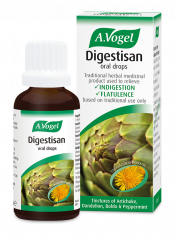An introduction to FODMAPs
FODMAP is an abbreviation for a class of simple, short-chain carbohydrates, which include oligosaccharides, disaccharides, monosaccarides and polyols. These are indigestible components of many foods you eat including certain fruit and vegetables.
FODMAP intolerance
For many of us the natural process of FODMAP digestion causes us problems.
FODMAPs naturally pass through the small intestines undigested and into your large bowel where they are digested by bacteria specific to our colon. As they are broken down, gas and beneficial short- chain fatty acids are produced, which in many cases can be beneficial.
However, in abnormal circumstances or in excess, this process can give rise to flatulence, bloating, pain, constipation or diarrhoea. It is normal for some gas to be produced but, for individuals who are sensitive, this process can give rise to some difficult symptoms.
Which foods contain FODMAPs?
FODMAPs are short-chain carbohydrate components which appear in a surprisingly wide variety of fruit, vegetables, dairy components, legumes, nuts and sweeteners. These are often key components in our diet.
Refer to our high FODMAP foods page to get a full list of foods to consider.
Symptoms of FODMAP intolerance
FODMAP intolerance may occur alone or in combination with other sensitivities and, in some cases, may contribute to the existence of a functional gastrointestinal disorder such as Irritable Bowel Syndrome (IBS).
It may be difficult at first to determine the cause of your symptoms, but dietary changes are useful for identifying triggers. Typical symptoms of FODMAP intolerance include:
It is important to note that symptoms may take up to a couple of days to appear. It is often beneficial to keep a food and symptoms diary to identify patterns in your symptoms.








